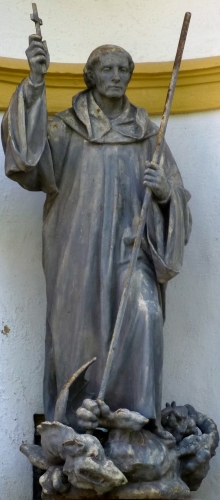Saint Rupert, also known as Rupert of Salzburg, was Bishop of Worms as well as the first Bishop of Salzburg and abbot of St. Peter’s in Salzburg. He was a contemporary of the Frankish king Childebert III.
Saint Rupert was a scion of the Frankish royal Merovingian dynasty and a likely descendant of Count palatine Chrodbert II. As bishop at Worms, Rupert was first accepted as a wise and devout dignitary, but the mostly pagan community came to reject him and forced him out of the city by the end of the 7th century.
Saint Rupert then moved to Altötting, where he started his missionary work by preaching to the locals. He would sail down the Danube river, visiting many towns, villages and forts. Soon he had converted a large population along the Danube, reaching southeastward to the Bavarian border with the Pannonian lands, which were under the rule of the Avar Khaganate.
As in Lorch, Rupert was able to build on early Christian traditions that were already in place. He re-established the monastic community at St. Peter’s Abbey and laid the foundations of Salzburg Cathedral, which was finished by his successor Vergilius. He also founded the Benedictine nunnery of Nonnberg beneath the Festungsberg fortifications (later Hohensalzburg Fortress), where his niece Erentrude became the first abbess.
Saint Rupert is venerated as a saint in the Roman Catholic and Eastern Orthodox Churches. He is also patron saint of the Austrian state of Salzburg.
Sources:
https://en.wikipedia.org/wiki/Rupert_of_Salzburg
"St. Rupert". The Catholic Encyclopedia. Vol. 8. Robert Appleton Company
"Orthodox Europe :: Austria". www.orthodoxengland.org.uk.







